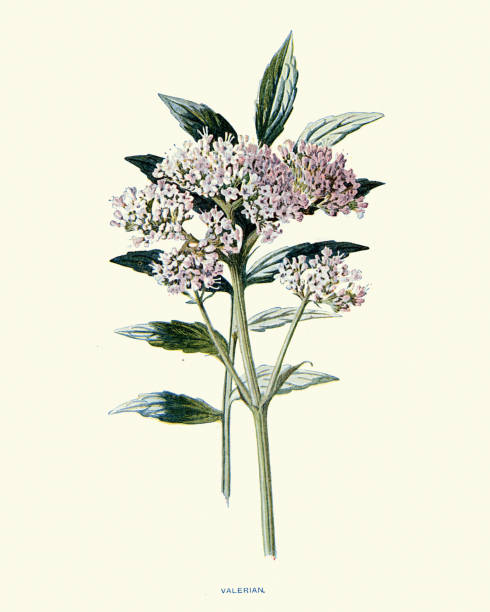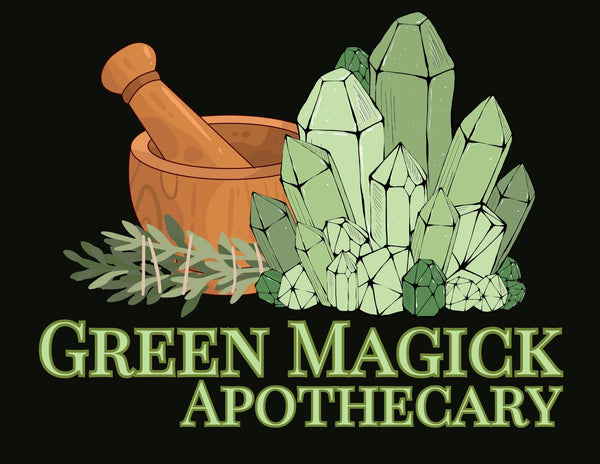
Spotlight Herb: Valerian
Herb Spotlight: Valerian – Nature’s Soothing Elixir
Welcome back to our Green Magick Apothecary blog series, where we explore the rich history, folklore, and uses of nature’s most powerful botanicals. Today, we turn our attention to Valerian (Valeriana officinalis)—a plant steeped in ancient wisdom, herbal medicine, and a touch of mysticism.
The Botanical Profile of Valerian
Valerian belongs to the Valerianaceae family, a diverse group of over 300 species found across Europe, Asia, North and South America, particularly in mountainous regions. It thrives in moist environments, often growing near streams, rivers, and lakes. Standing tall at up to two meters, this hardy perennial produces delicate white-to-pink flowers from May to June, exuding an intensely sweet aroma that attracts bees and other pollinators.

While its flowers may be fragrant, the dried root of valerian carries a pungent scent that humans find unpleasant—but cats adore, much like catnip! This has earned valerian folk names like “stink root” and “yarrow.”

A Plant of Myths and Legends
Valerian’s lore is as fascinating as its scent. According to legend, the Pied Piper of Hamelin may have used valerian to lure rats away from the town. In Nordic traditions, people hung valerian above their doorways to ward off evil spirits and witches. Carrying a piece of the root was believed to protect against dark forces, leading to valerian’s nickname, “enchanter’s nightshade.” Folklore even claimed that if a bunch of valerian moved on its own, an invisible ghost or witch had entered the room.
A Long-Respected Medicinal Herb
The healing properties of valerian have been recognized for thousands of years. Ancient Greek and Roman physicians, including Hippocrates and Galen, prescribed valerian for insomnia and nervous conditions. By the 16th century, it was used to treat headaches, heart palpitations, trembling, and anxiety.
During wartime, valerian’s reputation as a nerve soother grew even stronger. Soldiers in World War I took valerian to calm the effects of shell shock, and in World War II, the English used it to ease air raid stress.
The Science Behind Valerian’s Calming Effects
Modern research confirms what herbalists have known for centuries—valerian is one of the most effective natural remedies for relaxation and sleep. The plant’s root contains essential oils, valepotriates, and isovaleric acid, which interact with the nervous system to reduce stress and promote restful sleep.
One of valerian’s key components, lignans, mimic adenosine, a natural compound in the body that regulates the sleep-wake cycle. By binding to A1 receptors, valerian helps induce relaxation and ease distressing thoughts, making it a trusted ally for those struggling with insomnia, anxiety, and restlessness.
The Many Uses of Valerian
1. Natural Sleep Aid
Valerian preparations are among the most commonly used herbal sleep remedies. Studies show valerian can help with:
✔️ Falling asleep faster
✔️ Staying asleep through the night
✔️ Improving overall sleep quality
✔️ Reducing nighttime restlessness
A particularly effective combination is valerian with hops, a blend that has been scientifically shown to enhance sleep-inducing effects.
2. Anxiety and Stress Relief
Valerian isn’t just for sleep—it’s also a gentle yet effective remedy for nervousness, tension, and anxiety. Research shows that taking valerian extract can:
✔️ Reduce test anxiety
✔️ Calm inner restlessness
✔️ Diminish stress-related nervous tension
✔️ Ease physical symptoms of anxiety, such as digestive upset and heart palpitations
One study found that 300 mg of valerian root daily for four weeks significantly reduced anxiety-related brain activity in stressed individuals.
At Green Magick Apothecary, we harness valerian’s calming properties in our Stress Solace Balm, a soothing botanical blend designed to ease tension, quiet the mind, and bring a sense of deep relaxation. Infused with valerian, chamomile, and lavender, this balm can be gently massaged onto pulse points, temples, or the back of the neck to help you find peace amidst the chaos of daily life. Whether you’re preparing for a big presentation, winding down after a long day, or simply seeking a moment of calm, Stress Solace Balm is your natural companion for serenity.
3. Natural Pain Relief
Valerian’s muscle-relaxing properties make it an excellent remedy for tension headaches and menstrual cramps.
✔️ A 2020 study showed that 530 mg of valerian root extract per day for one month significantly reduced tension headache severity.
✔️ Another study found that valerian supplements helped reduce PMS symptoms, including muscle pain, cramps, and breast tenderness.
4. Menopause Support
For women experiencing menopause symptoms, valerian may offer natural relief. Research suggests it can help with:
✔️ Reducing hot flashes
✔️ Improving sleep disturbances
✔️ Easing menopause-related anxiety and depression
While more research is needed, early findings show valerian may be a valuable ally during this transitional stage.
Incorporating Valerian into Your Herbal Routine
Valerian is widely available as:
• Dried root for teas
• Capsules and tinctures
• Essential oil extracts
For sleep support, try drinking a warm valerian tea before bed, or use a valerian-infused balm (like our very own Tension Talisman) to help ease stress and tension.
Final Thoughts
Valerian is more than just an ancient remedy—it remains one of the most trusted and well-researched herbal allies for sleep, stress, and relaxation. Whether you’re seeking a natural sleep aid, a remedy for tension headaches, or support for anxious moments, valerian may be just the botanical companion you need.
Have you tried valerian before? Share your experiences with us in the comments!
🔮✨ Stay tuned for our next Herb Spotlight, where we continue to unlock the magick of nature’s apothecary. ✨🌿
